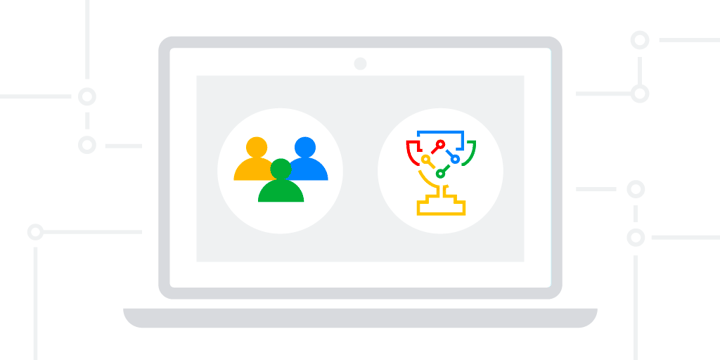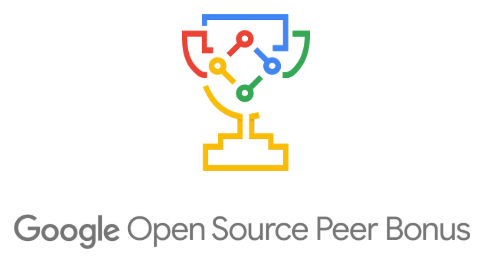If you've never heard of peer bonuses, we don't blame you.
Google was the first to implement such a program, and only a few others have followed suit.
There's your chance to get ahead of the curve. Read this article first, and we'll show you how it's done.

The Importance of Peer-to-Peer Recognition
Most think of employee recognition in terms of bonuses or raises given out by their boss or HR department. If a fellow employee recognizes another, it's usually verbal.
In 2022, Workhuman and Gallup partnered to study what recognition means to employees. According to the research, those who only received recognition from peers a few times throughout the year were three times likelier to be disengaged, showed a 39% higher probability of leaving an organization within one year, and had a 24% higher chance of struggling.
A surface-level analysis might lead you to believe recognition is insignificant, but it carries a huge companywide impact.
Recognition from peers enhances company culture.
Peer-to-peer recognition facilitates a collaborative and supportive work environment, as employees can see that their work is appreciated.
Recognizing a peer for their accomplishments and contributions helps them feel more confident and appreciated in their job and fosters a sense of belonging.
It emphasizes DEI.
A company culture built around support and collaboration emphasizes equality in the workplace. Giving employees a reason to recognize other teammates' unique skills and abilities bridges the communication gap between diverse groups with varying backgrounds.
For companies prioritizing diversity, equity, and inclusion (DEI) specifically, peers can recognize others who contribute to that goal or embody those values.
Team morale and performance get a boost.
Recognition is one of the top drivers of employee engagement — when companies spend at least 1% of payroll to recognize their employees, 85% of them report better engagement from their teams.
There are a few reasons for this:
- Recognition helps employees uphold positive relationships in times of crisis or change.
- It reinforces successes and motivates employees to continue providing quality work.
- It reminds them their contributions are appreciated by their peers and leaders.
When businesses successfully motivate employees through recognition programs, their teams are 21% more profitable and show significantly higher employee retention rates.
It's what employees want for themselves and each other.
41% of employees want more recognition from their peers specifically. Although leaders are critical sources of positive reinforcement, a direct coworker or someone who shares a similar workload is more likely to understand the nuances of a project and appreciate it from an informed perspective.
In that sense, they are often the best assessor of a job well done.
What is a peer bonus, exactly?
A peer bonus is a type of spot bonus employees use to recognize and reward each other for exceptional contributions. They're small cash rewards an employee can nominate a colleague for, with approval from their manager.
Reasons for peer bonuses could include:
- Demonstrating extraordinary effort on a project
- Accomplishing an important task or goal
- Filling in for a team member on PTO
- Exceeding expectations in customer service
- Serving as a positive role model for others
Unlike typical performance appraisal processes, peer bonuses are intended to be timely, personalized, and employee-driven.
We've already assessed why peer-to-peer recognition is important. A peer bonus lets employees put their money where their mouth is, going beyond a simple shoutout on Wednesday's middle-of-the-week Zoom meeting.
Dissecting Google's Peer Bonus Program

The Google peer bonus program was the first of its kind (that we know of). Google employees can nominate any employee they for spot bonuses, but the internal tool will automatically reject them under a few conditions:
- The employee cannot nominate their own manager.
- Managers aren't allowed to nominate their subordinates.
- An employee must wait six months before nominating the same employee again.
- Reciprocity (i.e., nominating someone who nominated them in the last six months) isn't allowed.
When employees nominate contributors, they type up a short description highlighting the achievements and qualities of their teammates, and why they should receive a bonus.
Managers then review each nomination before approving it or rejecting it. If they decide payments are warranted, the recipient is rewarded with cash bonuses of varying amounts (typically no more than a few hundred dollars). The bonus system automatically approves it in 3-5 days if a manager doesn't take any action.
Ideally, peer bonuses are somewhat work-related (e.g., "Thanks for staying late to finish the presentation for tomorrow's meeting"), but it doesn't have to be. Google's system also allows employees to recognize a colleague for simply being an awesome teammate, like "Thanks for lending an ear when I needed it."
Historically, Google flat-out rejects spot bonuses when they're nonsensical (such as, "I love your taste in music").
Why is the program successful?
Google's bonus system has been successful for over a decade for three reasons:
- It's efficient and simple to use. The process of nominating someone is straightforward and typically takes no more than a few minutes. The system requires minimal paperwork, as most processes are done digitally, which makes it easier for managers and their teams to track progress.
- It's cost-effective. Unlike company-wide bonuses, peer bonuses don't require a considerable commitment in terms of resources (time, money, etc.).
- It's highly personalized. Since they come from a colleague, these spot bonuses feel genuine and carry more value than traditional bonuses. Plus, thoughtful descriptions add a personal touch that let the recipient know they're part of a team that appreciates them.
Google's Open-Source Peer Bonus Program

Launched in 2011, the sole purpose of the open-source peer bonus program was to show recognition to its open-source contributors.
At its core, Google is an advertising company that heavily relies on open-source development for its web-based services. Andriod, Angular, Chromium (the foundation of Chrome), and countless others are all products of open-source development.
Extending spot bonuses to external contributors helped Google share the love with some of its most important contributors, even if they didn't share office space or work on Google's dime.
Considerations for a Successful Peer Bonus Program
Peer bonuses are an accurate and reliable way to reward contributions that may otherwise go completely unnoticed, but they can also have unintended negative consequences if they're poorly administered.
Here are three questions you should ask yourself when creating a peer bonus system:
- Who can nominate and who can be nominated?
- What qualifies someone for a nomination and what's the maximum reward amount?
- What happens if employees try to abuse the program (e.g., employees nominating each other out of favoritism, or managers gaming the system to give themselves bonuses)?
Here, we can learn a lot from Google. By automatically rejecting anything resembling "reciprocity" or favoritism between managers and subordinates, the company keeps its program from becoming a popularity contest.
Driving Employee Retention With a Peer Bonus Program of Your Own
Every employee retention program is different. But higher retention is a direct result of strong appreciation for employees, and peer bonuses are an excellent way to show it.
As a leader, you can proactively recognize everyone's individual performance by implementing a peer bonus program of your own.
1. Evaluate your organization.
Before implementing any kind of bonus program companywide, you need to conduct a reasonable assessment of your employees.
The easiest (and most nonintrusive) way to find out what your employees care about is through an anonymous employee benefits survey.
Start the survey with questions about their current engagement levels, whether they've considered leaving the company (and if so, how soon), and what they value in workplace relationships.
Then, segue into their views on current recognition levels and whether or not they feel as though more recognition would be beneficial (and how).
Throw in the idea of employee-to-employee spot bonuses and gauge their reactions. Plus, you can also understand your employees better with data-driven solutions as it’s a proven way to collect valuable data from them.
2. Design a bonus system that adheres to your organization's values and goals.
Peer bonuses should highlight your organization's values, from collaboration to innovation, while rewarding employees for work-related contributions.
Keep the reward amount within reason — it shouldn't be too low to recognize an effort or too high that it affects other aspects of the company's bottom line.
Google has had success maxing out their bonuses around a few hundred dollars. Since they're one-time payments for specific actions, we agree this is a solid parameter.
3. Create a system for employee nomination and review.
Google has the IT infrastructure to code its own nomination system, but you don't have to invest in an internal tool.
Look for affordable employee bonus software that allows you to create, approve, and distribute bonus awards quickly.
4. Measure engagement and retention levels.
To understand the success of your peer bonus program, you'll have to compare pre-existing engagement/retention metrics with post-bonus metrics.
Your HR department already has access to employee turnover rates, but tracking engagement can sometimes be more difficult.
Look for indicators like decreased absenteeism, increased productivity, and high KPI attainment levels. If you have access to employee sentiment surveys, use those as well.
Motivate Employees the Easy Way With Compt
Our rewards and recognition platform is by far the easiest way to implement, track, and maintain an effective peer bonus program (and we aren't just saying that).
Most companies use multiple award systems — peer bonuses are just one small part of the equation.
With Compt, you can send bonuses peer-to-peer or manager-to-employee based on your program's rules and contingencies in just a few seconds. With Slack integration, everyone can show their recognition publicly and share the love.
And since we're 100% tax-compliant, you'll see reduced administrative costs. By a lot.
Click here to see how it works.
